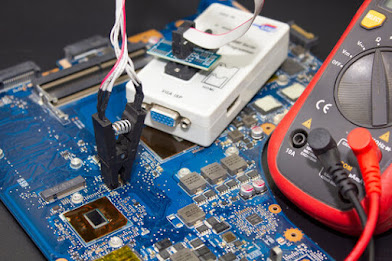RESISTOR TESTING
1- Visual inspection: Checks for missing or any burning on resistance.
2- Using Digital Multimeter: You can check the resistor resistance by selecting the ohm range in the digital multimeter, If the resistor is in circuit, you will generally have to remove the resistor so you are testing only the resistor value and not the other components in the circuit.
Connect test probes across the two points of the resistor as shown in the photo, polarity isn’t important, value of resistance shown is 9.86 kΩ.
Note: All resistors have a specific tolerance rating. The tolerance rating is marked by a color band on the end of the resistor’s body, normally the band is gold indicating 5 % tolerance. If the tolerance band is silver, then the rating is 10 %.
How to test SMD Resistors:
Because of the small size of SMD resistors, there is often not room for the traditional color band code to be printed on them. Therefore, new resistor SMD codes were developed. The most commonly seen codes are the three and four-digit system and an Electronic Industries Alliance (EIA) system called EIA-96.
Let’s take an example of a 3 and 4 Digit System: In this system the first two or three digits indicate the numerical resistance value of the resistor and the last digit gives a multiplier. The number of the last digit indicates the power of ten by which to multiply the given resistor value. Here are some examples of values under this system:
Select Ohms range and place your test probes across the two points of the SMD resistance as shown in the photo. this SMD resistance belongs to the system of coding 3-4 Digits System by use this system coding we’ll find value of resistance: 561 = 560 ohms or 0.560 k ohms.
This resistance is 0 ohm (zero-ohm resistance) it functions as a fuse.
The multimeter show OL that means bad resistance.
Once the SMD resistors are burnt, the only way to find out the value is through a schematic diagram or comparison from the same motherboard model.
Now we take a look at another popular coding method the EIA 96 System this system is based on a 96 series of preferred values.
The testing method is the same as a normal type of resistor, Calculate the SMD resistor code first, above example we have SMD network resistor marking on it number 510 its means 51k ohms.
Then place the test probes across the two ends of the SMD network resistor and read the result directly from the digital meter LCD display.














Comments
Post a Comment